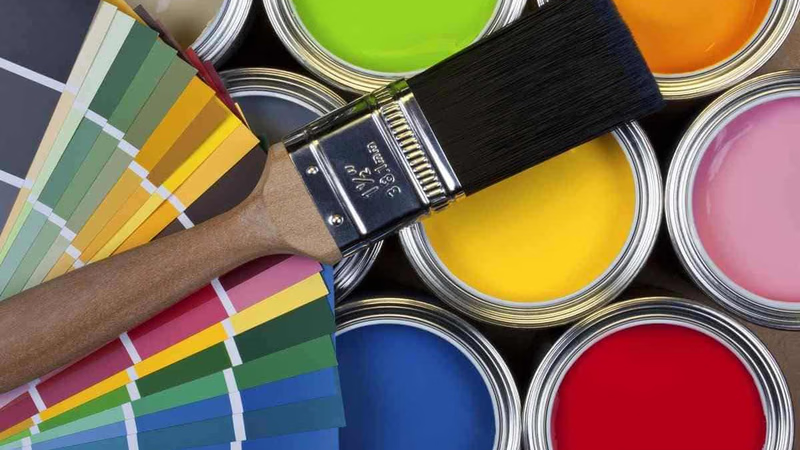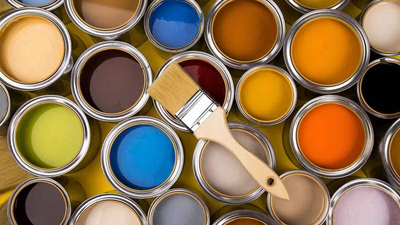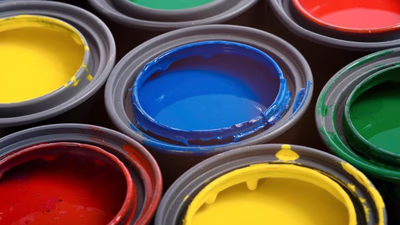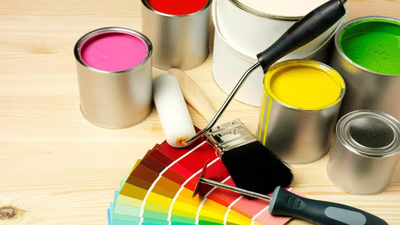
Building paints are essential for construction in West Asia.
Iran is one of the largest producers of construction paints in the West Asia region . Turkey is also one of the countries that plays an important role in the production of building paints in West Asia. Companies such as AkzoNobel Türkiye and Betek Boya operate in this industry. With the ever-increasing development of building foundations and construction projects, Saudi Arabia also has a great need for building paints. Kuwait is one of the countries that has the least activity in the construction paint industry. Due to limitations in domestic production and dependence on imports, the production and export of building paints in this country is very limited. Qatar also has the lowest production and export due to its dependence on imports in the field of construction paints. Most of the colors used in construction projects in Qatar are imported. Bahrain also has the least activity in the production and export of construction paints due to production limitations and dependence on imports.
West Asia is a region where construction is taking place extensively. Population growth, urbanization development, investment in infrastructure and development of construction projects have increased the demand for construction paints in this region. In West Asia, due to special weather conditions and environmental factors such as heat, dryness, intensity of sunlight and humidity, the need to protect and decorate buildings is of great importance. Building paints with characteristics such as resistance to weather changes, anti-corrosion, resistance to UV rays and light reflectivity are in high demand in this area. Due to the dependence on raw material resources and the oil-richness of West Asia, the construction paint industry can contribute to economic growth and job creation in this region. The creation and development of building paint production units can provide job and economic opportunities for young people and skilled people in this industry.
Germany is one of the largest manufacturers of construction paints in the world, and some German companies such as BASF and Henkel are active in this industry. Germany has significant exports to the Middle East due to its high quality and advanced technology in the production of building paints. India is one of the countries that is very active in the production of building paints. Indian companies such as Asian Paints and Berger Paints are known as the largest paint manufacturers in India and have significant exports to the Middle East. Turkey is active in the production of building paints, and companies such as AkzoNobel Turkey and Betek Boya are active in this field. Türkiye also has high exports to the Middle East countries.
West Asia has significant oil and gas reserves, and these resources can be used as important raw materials in the production of construction paints and their pigments. This can be useful for reducing the cost of production and dependence on the import of raw materials. Due to the oil-rich region, the stable supply of raw materials for the building paint production industry in West Asia is possible. This can help the relevant industries to sustainably and continuously provide the raw materials they need and have high efficiency. The presence of oil resources and raw materials in West Asia can help to develop technologies related to the production of building paints. These technologies can include improved manufacturing processes, research and development of new materials and innovative products.
West Asian architecture usually pays a lot of attention to the beauty and external appearance of buildings. Therefore, it is very important to use colors to decorate and beautify buildings in this area. Vivid colors, color diversity and a wide range of colors are welcomed in this area. In recent years, attention to environmental issues and sustainable development has increased in West Asia. This has led to a greater demand for building paints with features such as recyclability, reduction of pollutants and high environmental added value. The automotive industry in West Asia is also growing and this is increasing the demand for automotive and automotive related paints.
-

The West Asian region, particularly Iran and Turkey, plays a significant role in the production of construction paints. Iran is a leading producer, while Turkey hosts major companies like AkzoNobel Türkiye and Betek Boya. Saudi Arabia"s rapid construction growth has led to increased demand for building paints, contrasting with Kuwait, Qatar, and Bahrain, which rely heavily on imports due to limited domestic production. The region"s unique environmental conditions necessitate paints that resist weather changes and UV rays. The oil-rich landscape of West Asia offers potential for economic growth through local paint production, leveraging raw materials to reduce costs and enhance sustainability. Countries like Germany and India also contribute significantly to the market with high-quality exports. The architectural focus on aesthetics in West Asia drives demand for diverse color options and environmentally friendly products. As urbanization continues, the need for innovative paint technologies is expected to rise.
-

Understanding the target market is crucial for exporting construction paint. Researching local needs, competitors, and regulations helps shape an effective sales strategy. Effective advertising through branding, digital marketing, and participation in exhibitions can attract foreign customers. Direct communication with potential clients via email, phone, or video conferencing is essential for building relationships. High-quality products that meet local standards foster customer trust and long-term partnerships. Adapting to local tastes in color and style is important, as is providing reliable after-sales service. Collaborating with local representatives can facilitate market entry by leveraging their knowledge and connections. Competitive advantages such as pricing, product variety, and fast delivery can differentiate your offerings in a crowded marketplace.
Compliance with export laws and obtaining necessary certifications are vital before entering foreign markets. Understanding cultural nuances enhances business relations. Networking through trade shows and industry events builds valuable connections within the sector. Adhering to specific standards for building paints regarding technical specifications and labeling is mandatory in many regions. Awareness of regulations concerning harmful substances ensures compliance with health and safety protocols.
-

The construction paint market is experiencing significant growth, driven by increased construction activities in developing nations and a post-economic boom in developed countries. There is a rising demand for environmentally friendly paints, prompting manufacturers to produce low VOC options free from harmful substances. Technological advancements have led to innovations such as self-healing and nano-paints, enhancing product performance. Buyers prioritize high-quality paints that offer durability, resistance to environmental factors, and ease of application. Various types of paints are available, including acrylic, latex, oil-based, alcoholic, epoxy, carbonate, silicate, and silicone paints. Each type has unique properties suited for different applications. The trend towards sustainability is evident as consumers seek paints with lower environmental impact and higher color stability. The market also sees a growing interest in smart paints that can adapt to environmental changes. Overall, the diversity of colors and formulations available caters to the evolving preferences of buyers in the construction industry.
-

The global demand for construction paints has surged due to a construction boom, leading to significant advancements in production and technology among leading countries. Nations like China, the United States, Germany, India, South Korea, and Italy dominate the market by adhering to high-quality standards and international certifications. These manufacturers utilize advanced technologies such as nanotechnology and smart features in their products, enhancing durability and functionality. Innovations include self-healing properties and energy-efficient designs that cater to modern architectural needs. The competitive landscape is bolstered by effective marketing strategies, collaborations with architects, and supportive government policies. Additionally, these countries prioritize environmental standards by minimizing harmful substances in their production processes. Their strong infrastructure and skilled labor force further enable efficient production of a diverse range of high-quality paints that meet global market demands.




